Top 7 Elements of an Ergonomic Home Office
An ergonomic home office is vital to be an effective remote worker. You don’t need to buy the most expensive items to be ergonomic. Photo: RawPixel
An ergonomic home office needn’t be expensive. These basic components can make all the difference to your well-being.
When you set up your home office, how much thought was given to the ergonomics of your equipment and furniture? If you’re like many people, the initial focus was getting a desk, a chair, and a quiet space to work. But after a while, and many pinched nerves and back aches later, you finally realize it’s time to look at your work space from a more ergonomic perspective.
Studies have shown that remote workers work longer hours than onsite workers, with most of these hours spent sitting in front of a computer. That’s why several health issues can develop if an ergonomic approach isn’t taken from the onset of working from home.
Having an ergonomic home office needn’t be expensive or elaborate. In fact, some of these basic elements will make all the difference to your muscles and other physical systems, as well as your performance:
-
Desk Chair
-
Desk
-
Computer Monitor
-
Keyboard
-
Mouse
-
Lighting
-
Sound
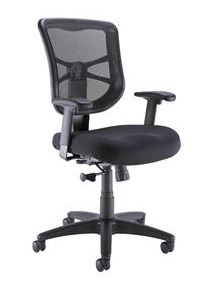
Ergonomic desk chair by Bush Business Furniture
Ergonomic Desk Chair
The basics of an ergonomic chair boils down to flexibility. That is, the ability to move and adjust various parts of the chair: arm rests, height, backrest angle, and seat depth. The moving parts of a desk chair should conform and help you maintain good posture.
According to the Kansas Chiropractic Foundation, “the long-term effects of poor posture can affect bodily systems (such as digestion, elimination, breathing, muscles, joints and ligaments).”
 Desk
Desk
Whether a sit desk or stand desk is best for you depends on your personal style and physical needs. Someone who has issues with their legs, such as varicose veins, might not want a stand desk. Otherwise a stress mat would be necessary. On the other hand, if you have issues with your back, standing for any length of time, even with a mat, can be painful. However, having the option is ideal, since moving around a couple times an hour is good for anyone, regardless of their other issues.
Your computer monitor should not cause your neck to be crooked up or down. It should be eye level. You can raise your monitor by placing it on a stand or, better yet, you can invest in a monitor arm. A monitor arm attaches to your monitor and your desk, allowing you to adjust your monitor to whatever level is appropriate for your height.
[See The Workstation Planner, by Ergotron]
Ergonomic Computer Keyboard
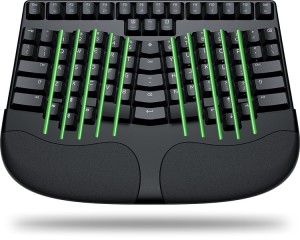
Truly Ergonomic Mechanical Keyboard
An ergonomic keyboard is designed to keep your hands in the most natural position when you are typing. This is a slight upside down “V”. An ergonomic keyboard will also prevent your wrists from being bent while typing because of its soft gradual incline from your desk to the keys themselves. (Note: You can give your wrists additional support by using wrist guards, such as IMAK Smart Gloves.)
Computer Mouse
“Our hands, wrists, and arms do most of the ‘active’ work at a computer workstation.” (Yale.edu) This can lead to serious nerve damage, known as Carpal Tunnel Syndrome. To help prevent this painful condition an ergonomic mouse is critical. A good mouse is one that lets your hand rest in a natural position, requiring minimal twisting of your wrists.
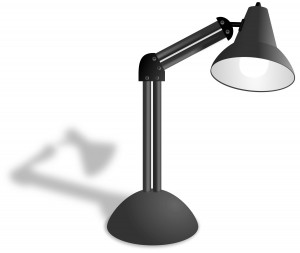
Flexible lighting
Lighting
Perhaps the most important aspect of lighting, other than to make sure you can see, is that it is glare free.
Ceiling light usually offers the most even lighting, but it’s also best to have a light you can move around as your tasks demand. Flexible, glare free lighting is best. Lighting from your computer screen affects you differently at different times of day which can cause eye strain, especially if you work at night.
One way to combat this is to use a monitor light display program such as Flux, a free program which makes the color of your computer’s display adapt to the time of day, warm at night and like sunlight during the day.
[Related: Don’t Let Working from Home Ruin Your Health!]
Sound
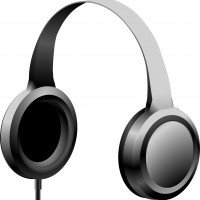
Headphones vs earbuds
Headphones always have been a danger to our hearing if you listen too long to loud music. But ear buds brought hearing loss to a whole new level. Because ear buds don’t cancel out outside noise like regular headphones do we tend to turn our music up louder. And because they fit inside your ear that means we are blasting that loud sound directly into our ear canals. (Are Headphones Bad For Hearing?) If you need to chose between ear buds and head phones, opt for the latter.
Do you need a complete office overhaul, don’t fret. Make one change at a time so you won’t be overwhelmed. Over time you’ll notice that each small change helps you be more productive, happier, and healthier.
Your turn: Do you have an ergonomic home office? If not, what element do you need to work on first?
Let’s talk more about this! Find us on Facebook or LinkedIn
Does your resume need help? Check out our resume rewrite packages!
Category: Productivity, Telecommuting



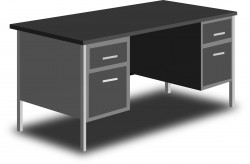 Desk
Desk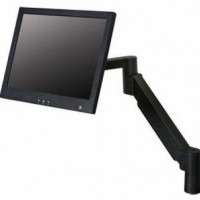






Comments (1)
Trackback URL | Comments RSS Feed
Sites That Link to this Post